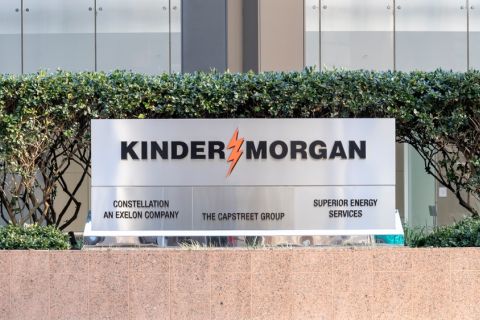
Liberty Energy saw a reduction in its North American drilling and completions activity during the second quarter, a trend expected to continue in the back half of the year. (Source: Shutterstock)
Liberty Energy Inc. reported a reduction in frac activity during the second quarter—a trend that’s expected to continue the rest of this year.
As customers changed their development schedules, delayed drilling plays and redeployed frac fleets from gassy to oilier basins, Denver-based Liberty Energy saw increased white space in its calendar during the second quarter, the company reported in earnings on July 19.
The additional white space contributed to a reduction in quarterly revenues, Liberty CEO Chris Wright said on a conference call with analysts. The company recorded revenues of $1.19 billion in the second quarter—down over 5% from $1.26 billion compared to last quarter, but up 27% over the same period last year.
Liberty anticipates its North American drilling and completion activity in the second half of 2023 to be slightly lower than the first half, Wright said.
“If our customers’ scheduled work reductions become larger, we may reduce active fleet count by one to three fleets in the second half of the year to balance demand,” Wright said. “We will consolidate work to maximize the utilization of our crews.”
Other service companies are reducing their frac fleets in response to moderating activity. Wright argued that the more consolidated services sector might be better prepared to navigate the near-term softness to balance the market and protect margins than in previous downturns.
Oil and gas operators are largely sticking to their plans to modestly grow production or keep it flat. The large majority of well completions activity is simply offsetting normal production declines, Wright said.
“This combination underpins higher base levels of frac fleet utilization and more insulation from commodity price volatility than in prior cycles,” he said.
RELATED: Liberty Plans to Move Crews from Gas to Oil Basins
Price check
Despite a weaker outlook for North American drilling and completion activity, Liberty does not expect to see a meaningful change in service prices in the near term.
Liberty’s internal analysis found that industry frac demand has declined by nearly 30 active fleets, but the company has seen no meaningful change in average service pricing.
However, E&P operators are seeing some respite from high costs in the drilling and completion process. Operators are already benefitting from lower costs on consumable inputs, including drill pipe, steel casing, cement, frac sand and fuel, Wright said.
“Liberty is working with our customers to help lower their costs while maintaining our margins,” he said.
The company expects to continue generating “healthy free cash flow” to return capital to shareholders through dividends and stock buybacks.
Liberty returned $69 million to shareholders during the second quarter, including spending $60 million to repurchase 2.7% of the company’s outstanding shares.
The company also declared a second-quarter cash dividend of $0.05 per share—in line with last quarter’s dividend.
Last summer, Liberty reinstated its return of capital program, including a share repurchase authorization of $250 million. Earlier this year, the oilfield services company boosted its share repurchase program up to $500 million.
Since reinstating the return of capital framework, Liberty returned $287 million to shareholders through dividends and the repurchase of 9.7% of its outstanding shares.
Liberty also closed its $78 million acquisition of Siren Energy, an integrated natural gas compression and CNG delivery business focused on the Permian Basin, during the second quarter.
RELATED: Liberty Buys Permian-focused Siren, Launches New Alternative Fuel Unit
Recommended Reading
Ryan Lance: ConocoPhillips Wants to ‘Double’ LNG Project Portfolio
2024-09-20 - ConocoPhillips aims to ingrain itself into the global LNG ecosystem, from shale gas output at the wellhead to liquefaction to shipping to regasification in Europe and Asia, CEO Ryan Lance said.
Pitts: LNG Sector, Beware! Aramco is Coming
2024-08-19 - Loaded with cash, Saudi oil powerhouse Aramco has embarked on a net-zero quest.
Poten: North American LNG Projects to Double Capacity by 2027
2024-09-27 - Nine North American LNG export projects under construction will add an estimated 98.6 mtpa of capacity by the end of 2027, with 6 of them located in the U.S., according to Poten & Partners.
Kinder Morgan to Boost NatGas Capacity in Texas
2024-10-16 - Kinder Morgan said it has made FID for the Gulf Coast Express expansion and confirmed a new pipeline project to move gas to the site of future Southeast Texas LNG export facilities.
TPH: LNG Agreements Start to Materialize, but Most Non-binding
2024-09-17 - Since the end of April, U.S. LNG export facilities have made agreements totaling 16 mtpa, or 72% of the year’s 22.5 mtpa in offtake agreements.
Comments
Add new comment
This conversation is moderated according to Hart Energy community rules. Please read the rules before joining the discussion. If you’re experiencing any technical problems, please contact our customer care team.






